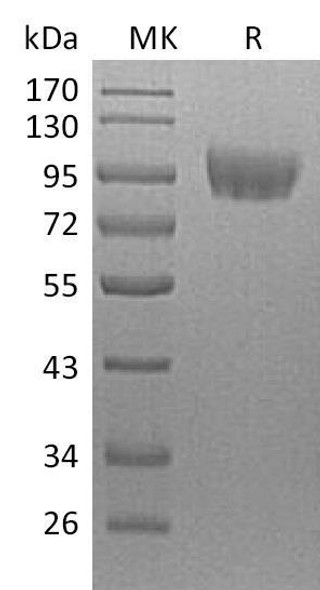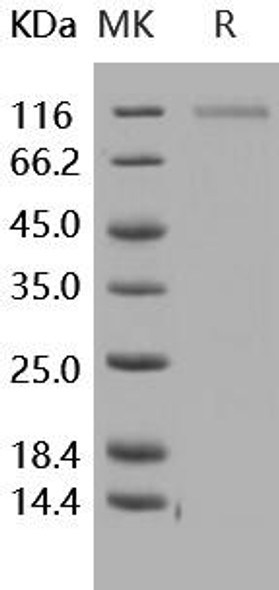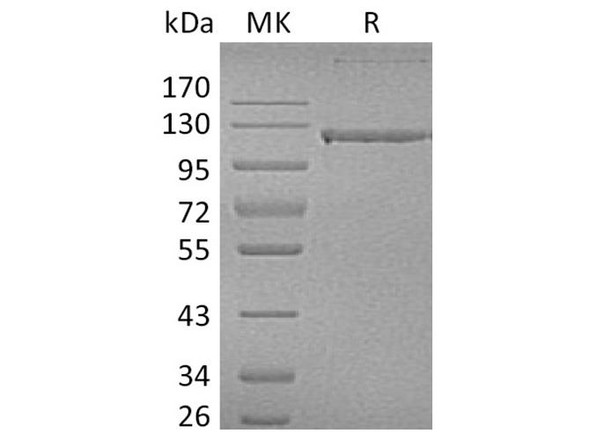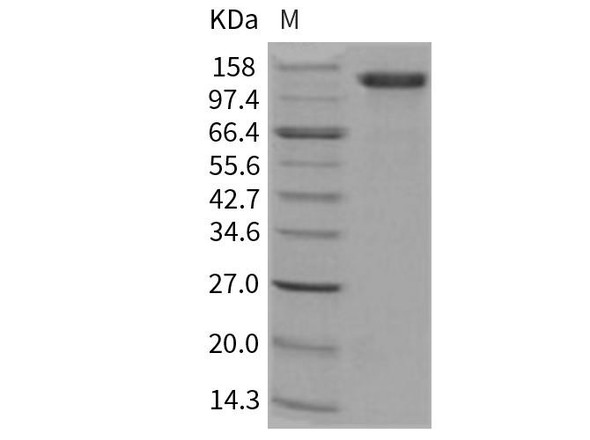Description
| Product Name: | Human PECAM1/CD31 Recombinant Protein (His tag) |
| Product Code: | RPES6014 |
| Size: | 20µg |
| Species: | Human |
| Expression Host: | HEK293 Cells |
| Synonyms: | Platelet endothelial cell adhesion molecule, PECAM-1, EndoCAM, GPIIA, PECA1, CD31, PECAM1 |
| Mol Mass: | 66 kDa |
| AP Mol Mass: | 85 kDa |
| Tag: | C-His |
| Purity: | > 95 % as determined by reducing SDS-PAGE. |
| Endotoxin Level: | Please contact us for more information. |
| Bio Activity: | Testing in progress |
| Sequence: | Met 1-Lys 601 |
| Accession: | P16284 |
| Storage: | Generally, lyophilized proteins are stable for up to 12 months when stored at -20 to -80°C. Reconstituted protein solution can be stored at 4-8°C for 2-7 days. Aliquots of reconstituted samples are stable at < -20°C for 3 months. |
| Shipping: | This product is provided as lyophilized powder which is shipped with ice packs. |
| Formulation: | Lyophilized from sterile PBS, pH 7.4. Normally 5 % - 8 % trehalose, mannitol and 0.01% Tween80 are added as protectants before lyophilization. Please refer to the specific buffer information in the printed manual. |
| Reconstitution: | Please refer to the printed manual for detailed information. |
| Background: | CD31, also known as platelet endothelial cell adhesion molecule-1 (PECAM-1), is a 130 kDa heavily glycosylated transmembrane protein belonging to the immunoglobulin (Ig) superfamily of cell adhesion molecules. CD31 is highly expressed on endothelial cells and at a lower level on platelets, granulocytes, macrophages, dendritic cells, T and B cells, and natural killer (NK) cells. It is involved in cell adhesion and is required for transepithelial migration of leukocytes (TEM). CD31 is composed of an extracellular domain (ECD) of 574 amino acids containing six Ig-like domains, a transmembrane domain, and a 118 aa cytoplasmic domain. The latter undergoes alternative splicing which generates multiple isoforms showing altered adhesive properties compared to full length CD31. The human CD31 ECD shares 63% and 61% aa sequence identity with mouse and rat CD31, respectively. CD31 acts as a homophilic receptor through its extracellular domain and is involved in downstream signaling via its cytoplasmic domain. This domain contains highly conserved ITIM motifs which, once tyrosine phosphorylated, recruit and activate the signaling molecules Src and SHP-2. The resulting inhibition of TCR signaling increases the activation threshold of T cells, thus reinforcing peripheral tolerance and preventing development of autoimmunity. CD31 additionally regulates immune responses by acting as a key inhibitory receptor in dendritic cell development. Besides its role in TEM, CD31 appears to regulate T cell trafficking through a complex coordination of endothelial cell junctions and T cell extravasation. |






